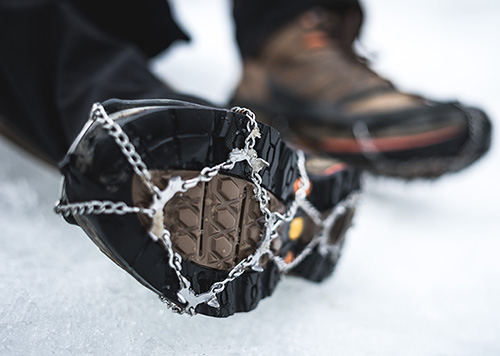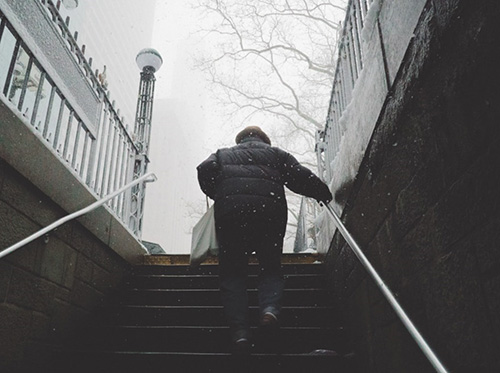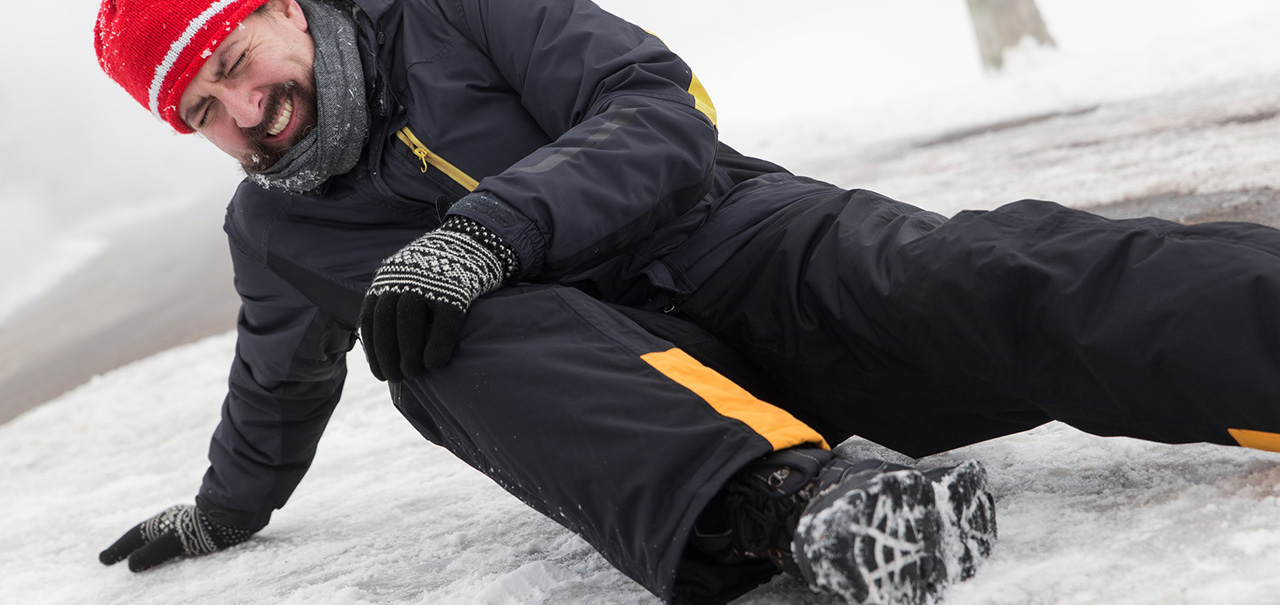How to Avoid Winter Weather's Slips, Trips & Falls
By Kristy Warren
Winter weather can spell painful slip-and-falls. Slushy sidewalks, melting snow, and ice patches are common culprits in taking a tumble, increasing your risk for sprained ankles, bruising, pulled muscles, and even broken bones.
SIMPLE SAFETY TIPS TO REDUCE YOUR RISK OF A FALL:
- If you don’t need to go out in poor weather, skip the trip until the weather improves and stock up the pantry ahead of bad weather so that you can safely shelter in place during a storm.

- If you must go out, stick to well-cleared paths sprinkled with rock salt or ice melt.
- Wear the right gear. Choose an outdoor shoe or boot with sturdy, rubber soles and a strong, no-slip tread. If you’ll be facing icy surfaces, add slip-on ice cleats to improve your traction. Dress shoes often have poor tread, so if your job requires them, wear outdoor shoes for your commute and stash your dress shoes in your bag to change into once safely inside.
- Take your time. By slowing down, you’re less likely stumble and slip.
- Adopt the penguin walk. Why waddle like a penguin? They are the masters of navigating ice! By taking shorter, smaller steps and widening your stance, you can reduce your risk of a fall.
- Stay alert forchanging weather conditions. Snowfall can pick up abruptly and create dangerous white-out conditions. A subtle temperature shift can turn a slick surface into hard-to-spot black ice or melt snow into slippery slush.
- Stay handsfree. Keep your hands free at all times to hold onto railings, steady your balance, catch yourself if starting to slip, or break your fall. If you're holding something when you start to slip, your instinct is to protect it instead of breaking your own fall. Use a backpack, purse, or shoulder bag to carry your belongings and wear gloves instead of shoving your hands into your pockets so you're ready to catch or steady yourself.

- Stay vigilant even once you're indoors. Any buildup of snow or slush on your shoes will melt indoors, creating the potential for a sock-drenching puddle or a slick surface that could lead to a slip and fall. Remove your shoes and place them in a designated place out of the way to dry. Utilize a shoe rack or tray to minimize tripping or slipping hazards.
- If your home has smooth, hard floors like wood, linoleum or tile, wear non-skid socks or slippers with good tread instead of stocking feet to further reduce the risk for indoor slips and falls.
For more winter safety tips, stay tuned to our news page for the latest health and wellness information or visit us on Facebook at facebook.com/laurelhc.
